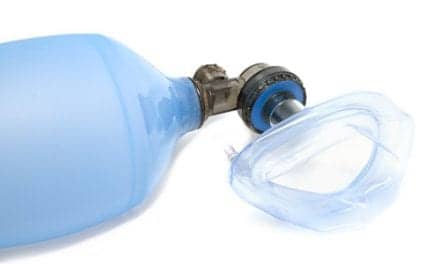The U.S. Food and Drug Administration (FDA) is updating the Letter to Health Care Providers issued on April 27, 2022, to ensure health care providers in the operating room setting are aware of the voluntary recall initiated by Medtronic for the risk of airway obstruction with the NIM CONTACT Reinforced EMG Endotracheal Tube and NIM Standard Reinforced EMG Endotracheal Tube.
If the tube obstructs and does not ventilate properly, patients may suffer oxygen deprivation, brain damage, or death. Medtronic issued a customer letter and is working to update and provide new device instructions for use to customers. Additionally, the FDA issued a notification of this Class I recall, the most serious type of recall. The FDA will continue to monitor reports of airway obstruction and ventilation failure with these devices.
Recommendations
The FDA recommends health care providers in the operating room setting, including anesthesiologists, nurse anesthetists, and surgeons:
- Review the customer letter from Medtronic for NIM CONTACT Reinforced EMG Endotracheal Tubes and NIM Standard Reinforced EMG Endotracheal Tubes, which includes the following recommended actions for when airway obstruction is encountered:
- Immediately deflate the cuff and attempt to ventilate.
- If ventilation cannot be re-established:
- Extubate the endotracheal tube from the patient.
- Re-establish ventilation with bag valve mask or laryngeal mask airway.
- Reintubate with a new non-silicone endotracheal tube or, if surgically needed, re-intubate the patient with a new, larger NIM Standard Reinforced EMG Endotracheal Tube or NIM CONTACT Reinforced EMG Endotracheal Tube which will require less cuff inflation volume and pressure.
- Be aware of the potential risk of airway obstruction and ventilation failure with these devices.
- Follow the instructions for use about tube management, which are restated in Medtronic’s customer letter.
- Use care when manipulating the tube’s position, as manipulation can cause the inflated cuff to stretch over the tube opening potentially causing obstruction to the patient’s airway.
- Deflate the cuff before any manipulation or repositioning of the tube and/or patient.
- Be aware that Medtronic is updating the instructions for use to reinforce the warnings and precautions.
- Report adverse events and outcomes to the FDA. Prompt reporting can help the FDA identify and better understand the risks associated with medical devices. Refer to the Reporting Problems to the FDA section below.
Background
Electromyogram (EMG) endotracheal tubes are used during surgery to provide an airway for patient ventilation and allow for intraoperative monitoring of EMG activity and the nerve integrity of the thyroarytenoid muscle of the larynx. These devices are 510(k) cleared and are made from either PVC or silicone elastomer. In the U.S., the currently marketed silicone-based EMG tubes are the Medtronic NIM CONTACT Reinforced EMG Endotracheal Tubes and NIM Standard Reinforced EMG Endotracheal Tubes.
FDA Actions
The FDA continues to work with the manufacturer to further evaluate the issue and identify potential contributing factors and mitigation strategies. The FDA will continue to monitor reports of adverse events related to the issue.
The FDA will keep health care providers and the public informed if significant, new information or recommendations become available.










